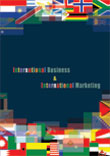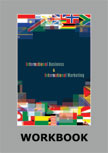Mercosur - Changing Course?




|
|
ICMR HOME |
Case Studies Collection
Case Details:
Case Code : BENV002
Case Length : 19 Pages
Period : 1991-2005
Pub Date : 2006
Teaching Note :Not Available
Organization : -
Industry : -
Countries : Latin America
To download Mercosur - Changing Course? case study
(Case Code: BENV002) click on the button below, and select the case from the list of available cases:

Price:
For delivery in electronic format: Rs. 400 ;
For delivery through courier (within India): Rs. 400 + Rs. 25 for Shipping & Handling Charges
»
Business Environment Case Studies
» Case Studies Collection
» ICMR Home
»
Business Environment Short Case Studies
» View Detailed Pricing Info
» How To Order This Case
» Business Case Studies
» Case Studies by Area
» Case Studies by Industry
» Case Studies by Company
Please note:
This case study was compiled from published sources, and is intended to be used as a basis for class discussion. It is not intended to illustrate either effective or ineffective handling of a management situation. Nor is it a primary information source.
|
|
<< Previous
Excerpts Contd...
The Crises
|
Mercosur began steps to widen the process of regional integration through a
series of framework agreements with various countries and regional blocs. But in
1997, the international financial environment changed. The Asian financial
crisis of 1997 had a devastating effect on several developing economies. In
1998, Russia announced a moratorium on the repayment of its foreign debt. This
brought several other countries under a cloud as well. The moratorium severely
undermined the credibility of developing economies to honor debt repayment
obligations and led to capital flight from countries as far away as Brazil and
Argentina leading to a serious financial crisis in both the countries...
|
|
Effects of the Financial Crises
The financial crises, first in Brazil and then in Argentina definitely
hurt the growth and development of Mercosur. GDP and foreign investment
fell considerably and there were instances of negative growth and the
economies entered into a recession. Argentina was one of the economies
worst hit by the devaluation of the Brazilian Real, as Brazil was the
destination for one-third of its exports.
|
|
When the Brazilian Real was delinked from the dollar and devalued, the
Argentine Peso was still pegged to the dollar and overvalued. This was a
period of great tension between the two neighbors as Argentine exports
to Brazil turned expensive, while Brazilian exports to Argentina became
cheap. In the first eight months of 1999, Argentine exports to Brazil
fell 28% compared to the corresponding period in 1998. As Brazilian
exports to Argentina surged by 37.6% in textiles and 66.4% in footwear
in the same period, Argentina imposed various non-tariff barriers.
Argentina, already affected by high levels of unemployment, slipped into
a recession with negative growth in this crisis... |
Exhibits
Exhibit I: Map of South America with Mercosur Members
Exhibit II: Stages of Economic Integration
Exhibit III: Exports Within and Outside Mercosur Countries- 1990-2001
Exhibit IV: GDP of Mercosur Countries
Exhibit V: Average Nominal Exchange Rates between the US Dollar, Brazilian
'Real' and Argentine 'Peso'
Exhibit VI: Share of Imports in Argentina's Consumption Goods
Exhibit VII: Share of Mercosur Members in Latin American Economy
Exhibit VIII: Brazilian Exports in USD Billion
Exhibit IX: Percentage of Brazilian Exports to GDP
|
|



